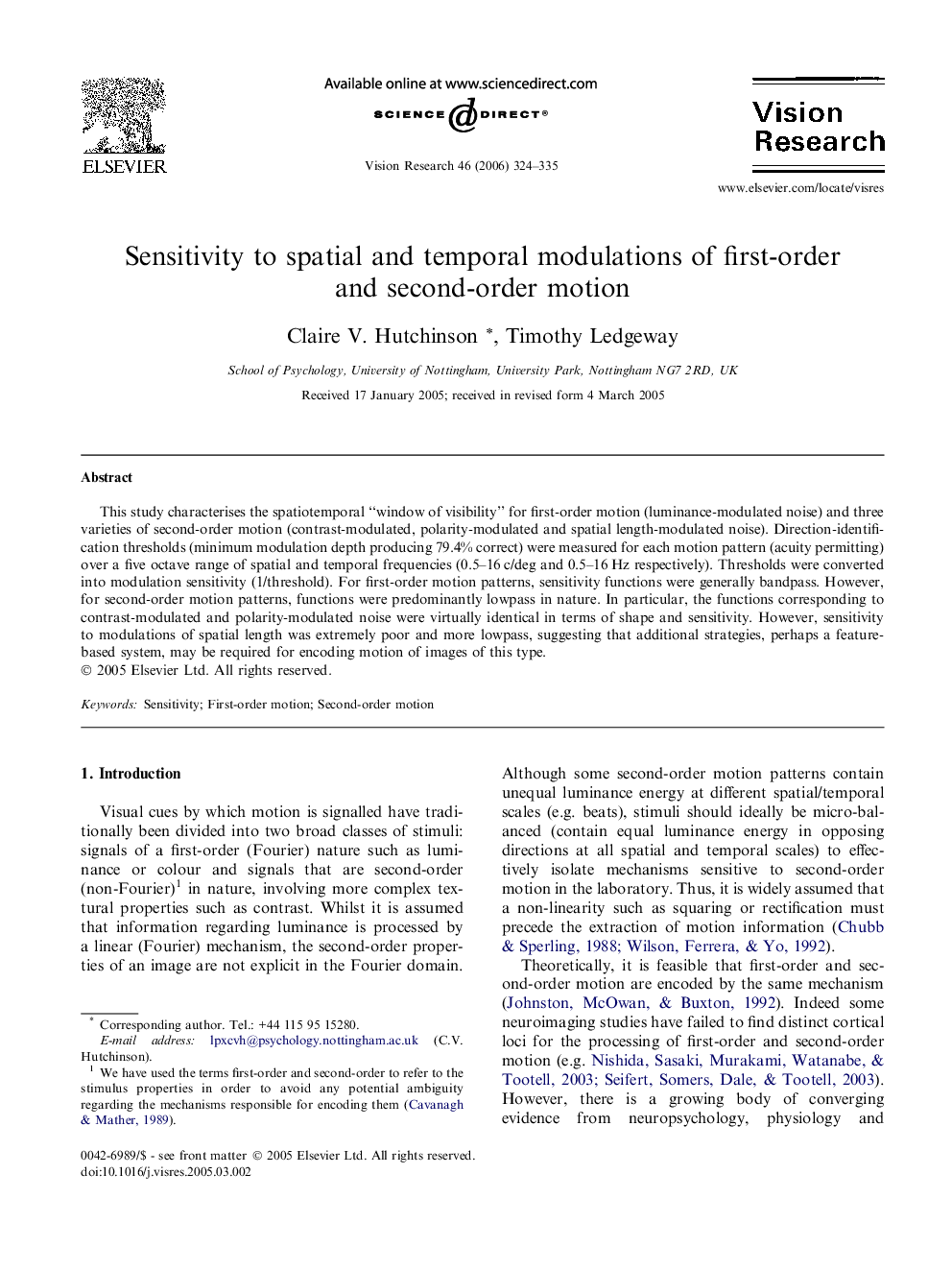| کد مقاله | کد نشریه | سال انتشار | مقاله انگلیسی | نسخه تمام متن |
|---|---|---|---|---|
| 4035380 | 1263523 | 2006 | 12 صفحه PDF | دانلود رایگان |

This study characterises the spatiotemporal “window of visibility” for first-order motion (luminance-modulated noise) and three varieties of second-order motion (contrast-modulated, polarity-modulated and spatial length-modulated noise). Direction-identification thresholds (minimum modulation depth producing 79.4% correct) were measured for each motion pattern (acuity permitting) over a five octave range of spatial and temporal frequencies (0.5–16 c/deg and 0.5–16 Hz respectively). Thresholds were converted into modulation sensitivity (1/threshold). For first-order motion patterns, sensitivity functions were generally bandpass. However, for second-order motion patterns, functions were predominantly lowpass in nature. In particular, the functions corresponding to contrast-modulated and polarity-modulated noise were virtually identical in terms of shape and sensitivity. However, sensitivity to modulations of spatial length was extremely poor and more lowpass, suggesting that additional strategies, perhaps a feature-based system, may be required for encoding motion of images of this type.
Journal: Vision Research - Volume 46, Issue 3, February 2006, Pages 324–335